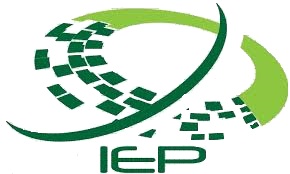
Title: Islamic Banking: Growth, Stability and Inclusion
Editors: Nafis Alam and Syed Aun Raza
Publisher: Palgrave
This book presents a discussion on three contemporary themes related to Islamic Banking. First is the resilient growth this sector has had across the world, especially since the beginning of twenty-first century. The growth momentum has been spurred by features of stability which has shown Islamic banking to be resilient during and after the financial crisis of 2007-2009. Furthermore, with vast majorities of people in the Muslim world having limited access to financial services together with a reluctance to use interest-based services presents a window of opportunity for Islamic banks to bring financial inclusion through greater outreach to serve the latent demand.
The content of the book is divided into several chapters. The first chapter introduces readers to existing research and literature in the field and highlights areas of potential scholarly development within Islamic banking studies. The chapter discusses the areas and issues that have been covered intensively in the recent literature, and also helps to identify the areas that have received relatively less attention. In Islamic banking, research areas such as growth, efficiency, determinants of profitability and risk management had generated greater scholarly research interest. Furthermore, investment performance analysis of passive and active portfolios, market efficiency analysis and event studies had also been done in the literature. But, the recent literature had focused relatively less on economic analysis of Islamic banking.
There is established amount of literature that presents the positive impact of banking development on economic growth, which attracts attention and debates whether Islamic banking would also have a similar impact and how Islamic banking could impact the economic stability? The second chapter examines the impact of the development of Islamic banking on economic growth and volatility by using a sample of 21 OIC member countries having both Islamic and conventional banks for the period of 2007–2013. Results show that, even though Islamic banking is relatively smaller in size, it is found to be conducive to economic growth but does not impact economic volatility.
In 2017, 3 out of 46 OIC countries had less than 20% population holding bank accounts. Nonetheless, still 32 out of 46 countries had less than half of the population holding bank accounts in OIC member countries. Thus, this presents a challenge as well as an opportunity for Islamic banks to increase their outreach toward fostering inclusive finance in the OIC countries. The results in the fourth chapter show that Islamic banks are performing well in using marketing efforts to generate meaningful financial and nonfinancial performance. More awareness and greater attention to outreach is needed to spur the growth in the sector further. The book also discusses the Islamic bank’s retail financing, instruments, and operations. The discussion demonstrates that it is essential to have a banking system based on Shariah principles that fulfill the needs of Muslim consumers. The chapter examines the various personal financing products, their underlying Islamic contracts, and their computational mechanisms with appropriate examples. It also critically evaluates the products of Islamic bank’s retail financing. The availability of various personal financing instruments in Islamic banks allows Muslim consumers to achieve their financing needs. Moving forward, it is suggested that a greater variety of instruments that invite fewer Shariah issues must be offered in the market to ensure a more vibrant Islamic banking system.

